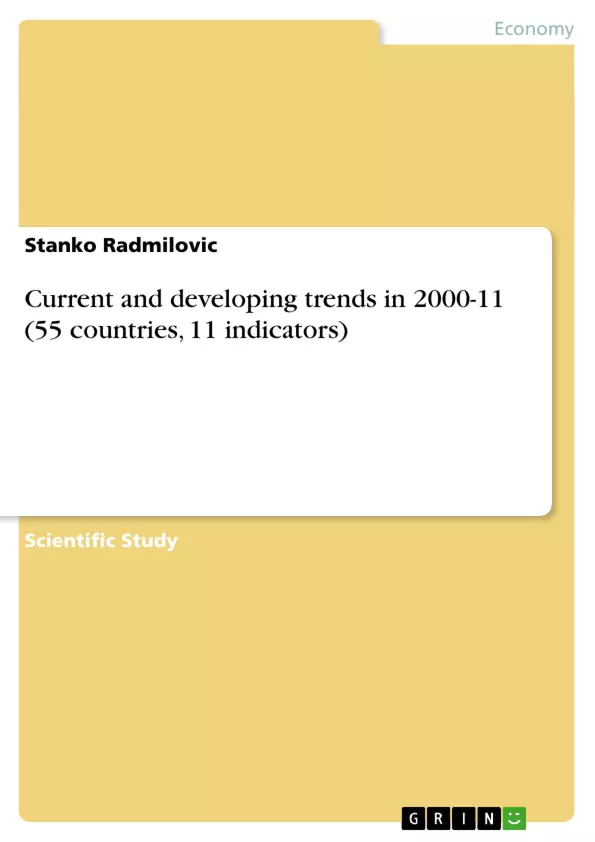In the article Economic movements (growth rate) 2000-12, in 55 countries ranked and segmented, our goal is different, more fundamental - and indicators contained in this article shall facilitate the achievement of this goal
Therefore, I am now prepared a much larger set of indicators (11 in 55 countries and 12 years) for much more complex research analysis, and conceptualization the strategy for the recovery and development. That set publish this article and place it at the disposal of economic analysts and researchers. Of course I'll contribute. In this sense, of course, commensurate with my abilities.
Inhaltsverzeichnis (Table of Contents)
- Indicators (11) on Current and Developing Trends in 2000-11 in 55 Countries
- Introductory accents
Zielsetzung und Themenschwerpunkte (Objectives and Key Themes)
This article aims to analyze the economic growth rates of 55 countries from 2000 to 2011, highlighting the significant disparities in growth rates between key countries and groups in the world. It investigates factors contributing to these imbalances and explores a broader set of indicators beyond traditional investment and savings metrics.
- Economic growth disparities between countries and groups.
- Factors influencing economic growth rates.
- The role of investment and savings in economic development.
- The significance of a wider set of indicators in understanding economic trends.
- Developing a strategy for economic recovery and development.
Zusammenfassung der Kapitel (Chapter Summaries)
The article begins with an introduction highlighting the paradox of faster growth in GDP per capita in US$ compared to real economic growth. It then focuses on analyzing economic growth rates across 55 countries, using 11 key indicators over a 12-year period. The article further emphasizes the importance of a broader set of indicators in understanding economic trends and developing strategies for recovery and development.
Schlüsselwörter (Keywords)
The main keywords and focus topics of the text include economic growth rates, economic development, country disparities, investment, savings, indicators, economic analysis, recovery strategies, and comparative analysis.
- Quote paper
- Professor Doctor Stanko Radmilovic (Author), 2013, Current and developing trends in 2000-11 (55 countries, 11 indicators), Munich, GRIN Verlag, https://www.grin.com/document/267569



